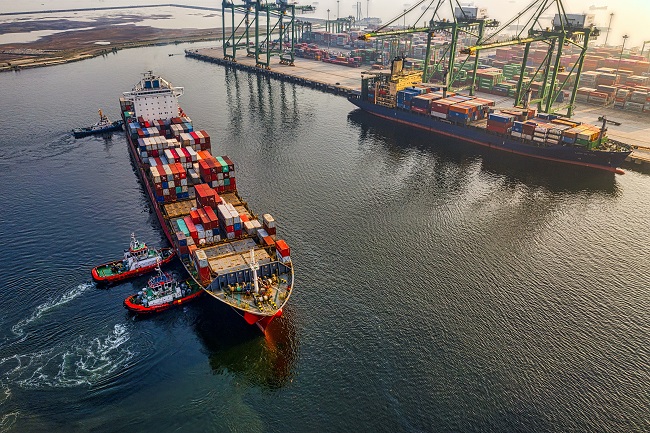Import cargo volume at the nation’s major container ports is expected to drop to nearly its lowest level since the beginning of the pandemic this month, according to the most recent Global Port Tracker report from the National Retail Federation (NRF) and Hackett Associates.
“With the U.S. economy slowing and consumers worried by rising interest rates and still-high inflation, retailers are importing less merchandise,” says Jonathan Gold, NRF vice president for supply chain and customs policy. “February is traditionally a slow month, but these are the lowest numbers we’ve seen in almost three years. Retailers are being cautious as they wait to see how the economy responds to efforts to bring inflation under control.”
In some ways, 2023 is reminiscent of 2020, says Ben Hackett, founder of Hackett Associates, “when the world’s economies shut down because of the pandemic and no one had a clue where we were headed. “Cargo volumes are down, and the economy is in a contradiction of rising employment and wages that promise prosperity at the same time high inflation and rising interest rates threaten a recession.
“The economy is far from shut down,” he continues, “but the degree of uncertainty is very similar.”
U.S. ports covered by Global Port Tracker handled 1.73 million twenty-foot equivalent units (TEU) – one 20-foot container or its equivalent – in December, the latest month for which final numbers are available. That was down 2.6% from November and down 17.1% from December 2021. That brought 2022 – which broke multiple monthly records in the first half of the year but saw significant drops in the second half – to an annual total of 25.5 million TEU, down 1.2% from the annual record of 25.8 million TEU set in 2021.
Ports have not yet reported January numbers, but Global Port Tracker projected the month at 1.78 million TEU, down 17.6% year over year. February is forecast at 1.57 million TEU, down 25.6% from the same month last year for the slowest month since 1.53 million TEU in May 2020, when many factories in Asia and most U.S. stores were closed by the pandemic. Since the beginning of the pandemic, only the 1.51 million TEU recorded in February 2020 and 1.37 million TEU in March 2020 have been lower.
March is forecast at 1.76 million TEU, down 24.8% year over year, April at 1.87 million TEU, down 17.3%, and May at 1.92 million TEU, down 19.9%. June is forecast at 2 million TEU, the first time imports are expected to be that high since October but down 11.3% from last June. Those numbers would bring the first half of 2023 to 10.9 million TEU, down 19.4% from the first half of 2022.
Global Port Tracker, produced for NRF by Hackett Associates, provides historical data and forecasts for the U.S. ports of Los Angeles/Long Beach, Oakland, Seattle and Tacoma on the West Coast; New York/New Jersey, Port of Virginia, Charleston, Savannah, Port Everglades, Miami and Jacksonville on the East Coast; and Houston on the Gulf Coast.




